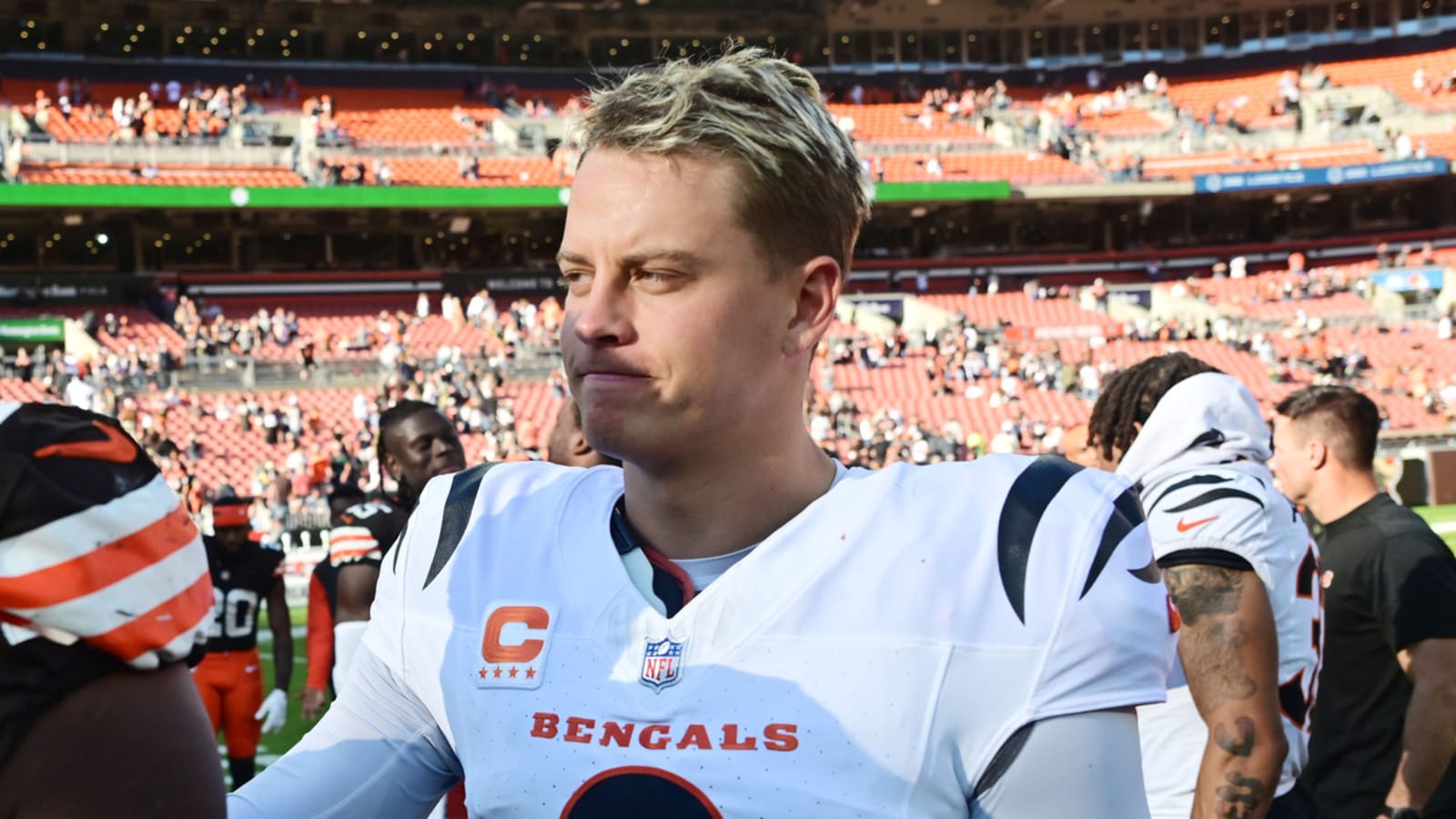
If Joe Burrow were to retire today, he'd be the all-time record leader in completion percentage of starting quarterbacks. His 68.2% completion rate after 59 regular season stats puts him one spot higher than his childhood idol, Drew Brees. It's the highest completion rate even if you lowered the required starts to just one full season's worth of games.
In an age of new ways to contextualize quarterback production, completion percentage has remained in the forefront of the conversation thanks to its simplicity. Nothing's more basic when measuring efficiency of quarterback play other than yards per attempt.
An old school stat for an old school quarterback. It's no wonder why Burrow points to it over others.
When asked during his weekly press conference what stats he looks at for himself, Burrow explained why the stat he's the all-time leader for is the one he looks at first.
"Completion percentage, I would say, is the biggest, for the most part, indicator of of how you're playing," Burrow said. "If you can just find completions, get the ball in your guys' hands, then you're going to get them more opportunities to go make plays after the ball, go score touchdowns, get the ball in your playmakers hands. It's not always going to be the coverage that you expect versus the concept that you call it for. Can you still get a positive gain in those looks?"
It's tough to be a good quarterback with a low completion rate. Incompletions result in completely wasted opportunities for yards to be had. Finding completions almost always gives plays a chance to be something of value.
Speaking of value, Burrow's admitted to not understanding more modern QB metrics such as QBR and Expected Points Added (EPA) and it's why he doesn't look to those, but his affinity for completion percentage would indicate he would probably value the latter if he familiarized himself with it.
"Some of the best plays turn out to be two, three, four-yard gains," Burrow said. "But maybe you got pressure and you had to slide in the pocket. You get hit, but you find the back. Just trying to keep the ball in guys hands, give them more opportunities to go make plays."
EPA in the most simplistic terms provides context to yardage. It's all about how much value you added on a given play relative to the circumstances that you faced before the snap. A four-yard gain on 3rd-and-3 matters a lot more than a four-yard gain on 3rd-and-13. Measuring that for every play is its purpose.
Completing a high rate of passes doesn't automatically mean you're consistently adding value in terms of EPA, but there does exist some correlation. Going back to 2018, which which is as far back as RBSDM.com goes for QB EPA numbers, 28 starting quarterbacks have completed at least 65% of their passes. 19 of them are also in the top 28 for EPA/play (Burrow is 13th in EPA/play among the 28).
Those who move the ball more often typically end up adding value. The exceptions are usually those whose value derives from pushing the ball further down the field or also rely on their legs more often than others. Think Josh Allen and Lamar Jackson.
Ultimately, the value of the Bengals' offense comes down to Burrow getting the ball in the hands of his playmakers. The stats will keep rising if he continues doing that for the next decade.
More must-reads:
- Chiefs sign star offensive lineman to $94 million deal
- Five NFL teams that should be most concerned about second-round pick holdouts
- The 'Total touchdown leaders by NFL season since 2000' quiz
Breaking News
Trending News
Customize Your Newsletter
 +
+
Get the latest news and rumors, customized to your favorite sports and teams. Emailed daily. Always free!








